
February:
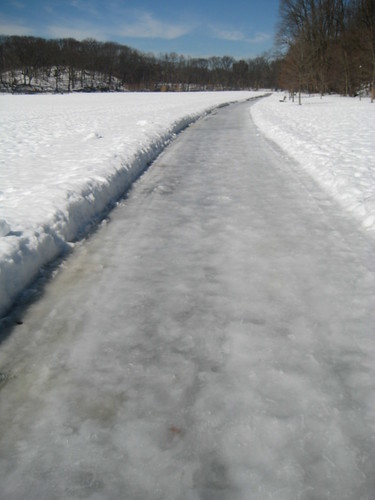
March:

April:

May:

June:

July:

August:

September:

October:

November:

December:

 Today I finally hiked up Roxy Ann. It's a mountain in Medford, visible from my parents' house. When I lived there as a kid, I wasn't a hiker. On my trips back since that time, I have other plans or the weather has been bad. Also, I listened to what non-hikers said - it's hot, it's hard, there are rattlesnakes.
Today I finally hiked up Roxy Ann. It's a mountain in Medford, visible from my parents' house. When I lived there as a kid, I wasn't a hiker. On my trips back since that time, I have other plans or the weather has been bad. Also, I listened to what non-hikers said - it's hot, it's hard, there are rattlesnakes.
 In what was probably my last hike of 2014, I went on a scouting hike at Harriman State Park. We hiked from the Tuxedo park-and-ride down to Sloatsburg, passing over several mountain ridges and the Dater Iron Mine. The app tracking our distance went buggy about 1/3 of the way through, but the hike was around 14 miles, with substantial elevation gain and loss.
In what was probably my last hike of 2014, I went on a scouting hike at Harriman State Park. We hiked from the Tuxedo park-and-ride down to Sloatsburg, passing over several mountain ridges and the Dater Iron Mine. The app tracking our distance went buggy about 1/3 of the way through, but the hike was around 14 miles, with substantial elevation gain and loss.

 I set out to hike the 50-something mile Batona Trail - recent reroutes have stretched it past its original 50 miles - over Thanksgiving. I didn't make it. But the part I did see was well worth it.
I set out to hike the 50-something mile Batona Trail - recent reroutes have stretched it past its original 50 miles - over Thanksgiving. I didn't make it. But the part I did see was well worth it. The trail is completely flat - at least the part that I did, from Bass River to Batsto. Later on, Apple Pie Hill is the high point of the area and it features a fire tower. Flat means less scenic variety, but it's also easier hiking. As this was my first backpacking trip in about three and a half years, I was okay with easier. (I was still feeling it.)
The trail is completely flat - at least the part that I did, from Bass River to Batsto. Later on, Apple Pie Hill is the high point of the area and it features a fire tower. Flat means less scenic variety, but it's also easier hiking. As this was my first backpacking trip in about three and a half years, I was okay with easier. (I was still feeling it.) I'm not sure what my total mileage was, as I'm not sure how much longer the reroute at the beginning of the hike was. Best guess is that day 1 was between 12 and 13, including the road walk, and day 2 was almost 17, again including the road walk out.
I'm not sure what my total mileage was, as I'm not sure how much longer the reroute at the beginning of the hike was. Best guess is that day 1 was between 12 and 13, including the road walk, and day 2 was almost 17, again including the road walk out.
 Although Bear Mountain is one of the classics New York City-area hikes,
I've never done it. And on this Ramblers hike at Bear Mountain State Park, I
still didn't do it. Instead, we hiked around Bear Mountain twice, first
in a large circle and then in a smaller one. The total hike was 13.3 miles with 2,228 feet of elevation gain - not bad for not actually climbing a mountain.
Although Bear Mountain is one of the classics New York City-area hikes,
I've never done it. And on this Ramblers hike at Bear Mountain State Park, I
still didn't do it. Instead, we hiked around Bear Mountain twice, first
in a large circle and then in a smaller one. The total hike was 13.3 miles with 2,228 feet of elevation gain - not bad for not actually climbing a mountain. The leaves are mostly fallen but there still was a lot of colors. That, combined with it being a sunny, warm day, made for a beautiful hike. It was no surprise that the Hudson River, with Bear Mountain on one side and Anthony's Nose on the other, was lovely, but I didn't expect the Popolopen Gorge near the end of our hike to be so nice. It was hard to photograph: In the summer, leaves would be very thick, but even at this time of year trees obscure the bottom of the gorge in photographs, although the eye has no trouble picking those details out when actually present. The picture of Popolopen Torne below is one of the few good ones I captured.
The leaves are mostly fallen but there still was a lot of colors. That, combined with it being a sunny, warm day, made for a beautiful hike. It was no surprise that the Hudson River, with Bear Mountain on one side and Anthony's Nose on the other, was lovely, but I didn't expect the Popolopen Gorge near the end of our hike to be so nice. It was hard to photograph: In the summer, leaves would be very thick, but even at this time of year trees obscure the bottom of the gorge in photographs, although the eye has no trouble picking those details out when actually present. The picture of Popolopen Torne below is one of the few good ones I captured.
 I decided to do something new every day for 100 days. While the new thing could be something big like skydiving, it didn’t have to be. After all, I wouldn’t have time for that every day. But it had to be bigger than a new restaurant with familiar cuisine,
I decided to do something new every day for 100 days. While the new thing could be something big like skydiving, it didn’t have to be. After all, I wouldn’t have time for that every day. But it had to be bigger than a new restaurant with familiar cuisine,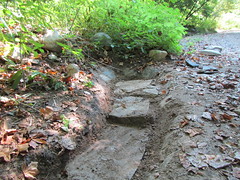 I consumed some new media and art forms. The dinosaur erotica was far and away the best conversation starter, although Straight Stuntin’ magazine was more educational. The Mary-Kate and Ashley movie proved to be un-get-through-able, while listening to ragas led me down a Wikipedia rabbit hole.
I consumed some new media and art forms. The dinosaur erotica was far and away the best conversation starter, although Straight Stuntin’ magazine was more educational. The Mary-Kate and Ashley movie proved to be un-get-through-able, while listening to ragas led me down a Wikipedia rabbit hole. I hiked above 12,000 feet for the first time, took barre, Brazilian jiu jitsu, TRX, high intensity interval training, kettleball, and burlesque classes (where I learned to fan dance and chair dance). I went to capoeira classes at Joao Grande’s and the LIC Palmares groups, and I went to my first open roda.
I hiked above 12,000 feet for the first time, took barre, Brazilian jiu jitsu, TRX, high intensity interval training, kettleball, and burlesque classes (where I learned to fan dance and chair dance). I went to capoeira classes at Joao Grande’s and the LIC Palmares groups, and I went to my first open roda.  Towards the end, it became harder to find truly new things I could fit in around a busy day at work. There were also things I wished to try but couldn’t. I never did get that pickleback or try that taxidermy class. But I still can. To the extent I’m still in a rut, it’s only to the extent of having a regular job and activities I enjoy, and that’s okay with me.
Towards the end, it became harder to find truly new things I could fit in around a busy day at work. There were also things I wished to try but couldn’t. I never did get that pickleback or try that taxidermy class. But I still can. To the extent I’m still in a rut, it’s only to the extent of having a regular job and activities I enjoy, and that’s okay with me.
 The hike up to the Red Hill fire tower is short - less than two miles each way - and although it is somewhat steep, it has little in the way of rocky climbs. I was surprised, then, to have it entirely to myself on what started out as a sunny Sunday.
The hike up to the Red Hill fire tower is short - less than two miles each way - and although it is somewhat steep, it has little in the way of rocky climbs. I was surprised, then, to have it entirely to myself on what started out as a sunny Sunday. On summer weekends, a volunteer stays at the tower and opens the top to visitors. The volunteer season lasts through Columbus Day, so I had just missed it by one week. Nevertheless, you can still walk up the stairs and look around, which is where the second photo was taken. I didn't hang around long up there due to wind and cold. The top steps were even getting icy and slippery. I turned around and went back down the mountain. Of course, when I was about two-thirds of the way down, the cloud system blew out to bother another mountain, and the sun shone down through the trees. But that's part of hiking - you get the vagaries of weather.
On summer weekends, a volunteer stays at the tower and opens the top to visitors. The volunteer season lasts through Columbus Day, so I had just missed it by one week. Nevertheless, you can still walk up the stairs and look around, which is where the second photo was taken. I didn't hang around long up there due to wind and cold. The top steps were even getting icy and slippery. I turned around and went back down the mountain. Of course, when I was about two-thirds of the way down, the cloud system blew out to bother another mountain, and the sun shone down through the trees. But that's part of hiking - you get the vagaries of weather. Three Catskills 3500 peaks in one hike - how very efficient! And how daunting!
Three Catskills 3500 peaks in one hike - how very efficient! And how daunting!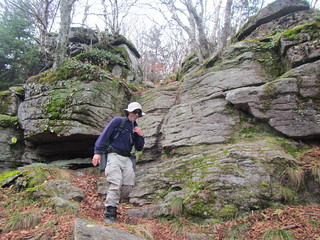 Plenty of rocks kept the terrain interesting. The fallen leaves on top of rock terrain meant keeping a close eye on one's footing, but that's an inevitable part of fall hiking. Unfortunately, the day was mostly gray, and we had a short bout of rain midway through. It wasn't enough to make us miserable, but it was enough that the views we had were not as spectacular as, I am told they can be. The photo below shows the view from Witternberg, with clouds hanging above the fall colors.
Plenty of rocks kept the terrain interesting. The fallen leaves on top of rock terrain meant keeping a close eye on one's footing, but that's an inevitable part of fall hiking. Unfortunately, the day was mostly gray, and we had a short bout of rain midway through. It wasn't enough to make us miserable, but it was enough that the views we had were not as spectacular as, I am told they can be. The photo below shows the view from Witternberg, with clouds hanging above the fall colors. We encountered many other hikers and backpackers on the trail, including a few that were not prepared for what they were doing. One hiker had firewood strapped to her backpack; I really hope she was just carrying extra weight for training purposes, because otherwise it was a real coals-to-Newcastle situation. Then there was the group that had made it a mile from the parking lot before setting up camp in exhaustion, unable to make it the three or so miles to the shelter. They were carrying heavy equipment in duffle bags. Okay, people, I'm not saying you need to buy the latest, most expensive equipment at REI, but ... maybe next time try hauling your equipage around the block first?
We encountered many other hikers and backpackers on the trail, including a few that were not prepared for what they were doing. One hiker had firewood strapped to her backpack; I really hope she was just carrying extra weight for training purposes, because otherwise it was a real coals-to-Newcastle situation. Then there was the group that had made it a mile from the parking lot before setting up camp in exhaustion, unable to make it the three or so miles to the shelter. They were carrying heavy equipment in duffle bags. Okay, people, I'm not saying you need to buy the latest, most expensive equipment at REI, but ... maybe next time try hauling your equipage around the block first?

 From there, it was a short walk to the park, which has a trail bearing Whitman's name. While his family moved to Brooklyn when he was relatively young, he spent summers back on Long Island visiting family and definitely walked those woods. I found the park itself to be rather uninteresting - pretty because there were trees and it was a nice sunny day, but not worth writing poetry about. I tried in vain to channel some Whitworthian enthusiasm.
From there, it was a short walk to the park, which has a trail bearing Whitman's name. While his family moved to Brooklyn when he was relatively young, he spent summers back on Long Island visiting family and definitely walked those woods. I found the park itself to be rather uninteresting - pretty because there were trees and it was a nice sunny day, but not worth writing poetry about. I tried in vain to channel some Whitworthian enthusiasm.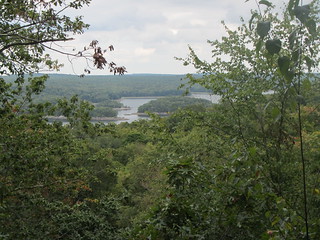 Yesterday I checked another state off my hiking list, adding Connecticut to the roll.
Yesterday I checked another state off my hiking list, adding Connecticut to the roll. The Friends of Van Cortlandt Park group offers led hikes about once a month, so I decided to go on their September hike. I went in part because it was in the northeastern woods, a part of the park I don't know very well.
The Friends of Van Cortlandt Park group offers led hikes about once a month, so I decided to go on their September hike. I went in part because it was in the northeastern woods, a part of the park I don't know very well.
We hiked about four miles, starting at the wetlands in the southeastern, and then following the Croton trail into the northern half of the park. Luckily, the forecast rain held off.
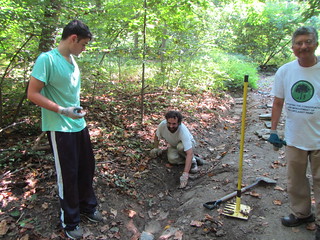 Yesterday, the Van Cortland Park volunteer trails crew started up again. We worked on a drainage ditch on the John Muir trail, in an area that can get pretty damp.
Yesterday, the Van Cortland Park volunteer trails crew started up again. We worked on a drainage ditch on the John Muir trail, in an area that can get pretty damp. On Sunday I went hiking with the Ramblers. The weather left something to be desired; it was brutally humid, and the forecast called for late-afternoon rain. Still, there was going to be ice cream, so why not?
On Sunday I went hiking with the Ramblers. The weather left something to be desired; it was brutally humid, and the forecast called for late-afternoon rain. Still, there was going to be ice cream, so why not? I had walked the bridges that connect Manhattan to Brooklyn, Queens, and Fort Lee, and between Queens and Brooklyn, but I hadn't realized until recently you could walk from the island of Manhattan to the Bronx via the Henry Hudson Bridge.
I had walked the bridges that connect Manhattan to Brooklyn, Queens, and Fort Lee, and between Queens and Brooklyn, but I hadn't realized until recently you could walk from the island of Manhattan to the Bronx via the Henry Hudson Bridge. On Sunday, I led my first hike with the Ramblers. It was an urban/not urban hike, starting near Grant's Tomb and turning around on the Long Path.
On Sunday, I led my first hike with the Ramblers. It was an urban/not urban hike, starting near Grant's Tomb and turning around on the Long Path. Back to New York City area hiking - not quite as spectacular as what Colorado has to offer, alas. This hike with the New York Ramblers was a ten-mile jaunt near Port Jervis, a town in New York but bordering New Jersey and Pennsylvania.
Back to New York City area hiking - not quite as spectacular as what Colorado has to offer, alas. This hike with the New York Ramblers was a ten-mile jaunt near Port Jervis, a town in New York but bordering New Jersey and Pennsylvania. After a day back in Denver to catch up on things, I did a solo dayhike to Lake Isabelle. The hike is listed in 100 Classic Hikes in Colorado and for good reason. It's not, as far as Colorado goes, a strenuously killer hike, but the rewards are tremendous.
After a day back in Denver to catch up on things, I did a solo dayhike to Lake Isabelle. The hike is listed in 100 Classic Hikes in Colorado and for good reason. It's not, as far as Colorado goes, a strenuously killer hike, but the rewards are tremendous. The hike to Rustler's Gulch was supposed to be our big wildflower hike, but previous day's hike to Ice Lake had already blown our minds. Rustler's Gulch was certainly pretty, and it had more wildflowers, but less variety.
The hike to Rustler's Gulch was supposed to be our big wildflower hike, but previous day's hike to Ice Lake had already blown our minds. Rustler's Gulch was certainly pretty, and it had more wildflowers, but less variety. This hike was highly recommended by my friends, and it actually exceeded their expectations.
This hike was highly recommended by my friends, and it actually exceeded their expectations. After a brief respite in the valley, the trail headed up again on slopes too steep for trees. We kept pausing to take wildflower flowers along the way, but eventually we reached the cirque with Ice Lake.
After a brief respite in the valley, the trail headed up again on slopes too steep for trees. We kept pausing to take wildflower flowers along the way, but eventually we reached the cirque with Ice Lake. The hike was 4.2 miles one-way, with significant elevation gain; it was the highest I had ever hiked, above 12,000 feet.
It was well worth it, though. This hike checked off nearly every box for
a great hike: waterfalls, mountains, scenic vistas, lakes, dramatic
rocks, and wildflowers. The wildflowers in particular were a surprise,
as my friends weren't anticipating them in such abundance and variety. We also discovered the existence of the hummingbird moth, which is exactly what it sounds like; picture a hummingbird with antennae, and you've got the hummingbird moth. Overall, it definitely rated as one of the best hikes I've done.
The hike was 4.2 miles one-way, with significant elevation gain; it was the highest I had ever hiked, above 12,000 feet.
It was well worth it, though. This hike checked off nearly every box for
a great hike: waterfalls, mountains, scenic vistas, lakes, dramatic
rocks, and wildflowers. The wildflowers in particular were a surprise,
as my friends weren't anticipating them in such abundance and variety. We also discovered the existence of the hummingbird moth, which is exactly what it sounds like; picture a hummingbird with antennae, and you've got the hummingbird moth. Overall, it definitely rated as one of the best hikes I've done.